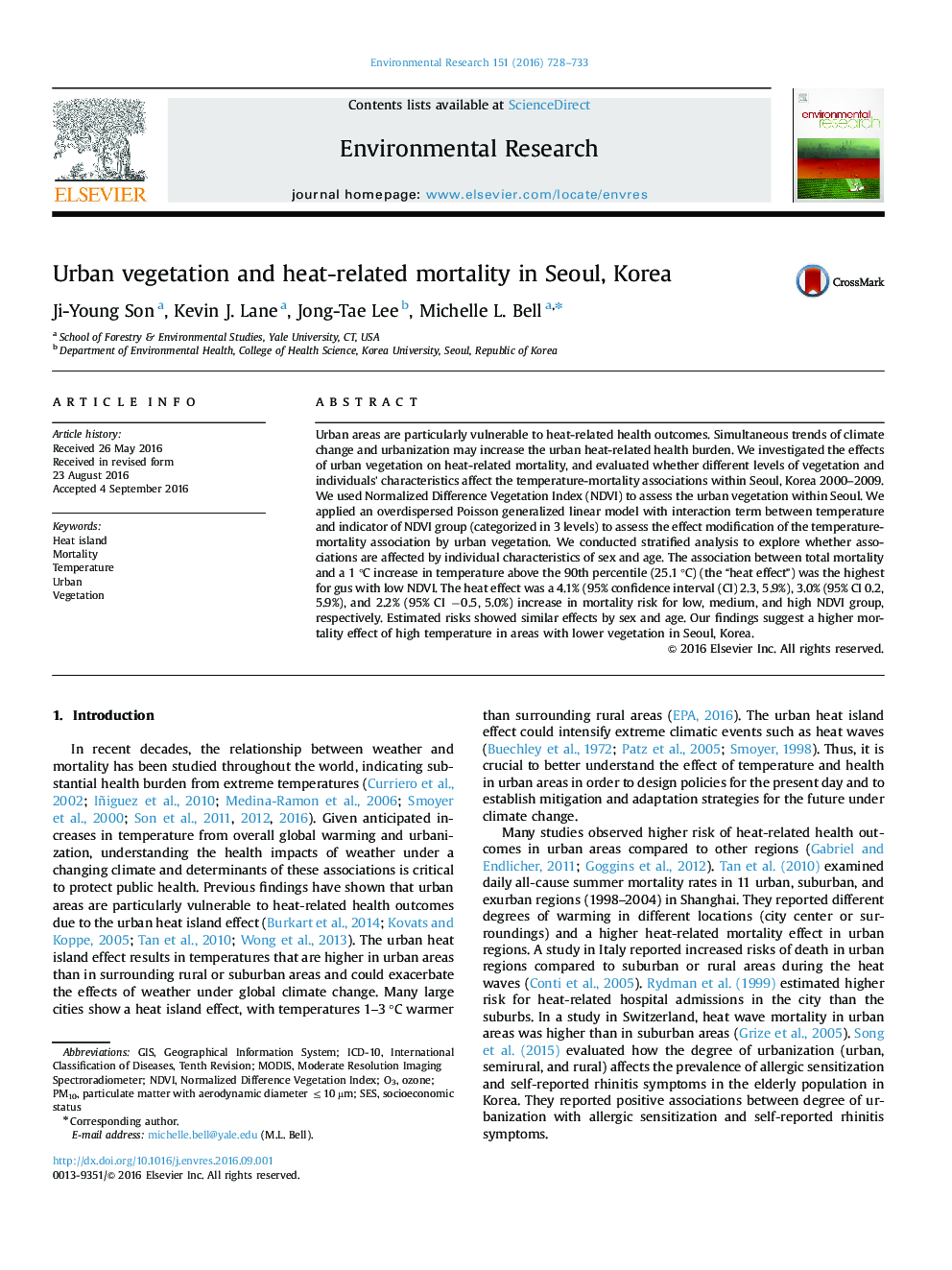| کد مقاله | کد نشریه | سال انتشار | مقاله انگلیسی | نسخه تمام متن |
|---|---|---|---|---|
| 6351216 | 1622552 | 2016 | 6 صفحه PDF | دانلود رایگان |
عنوان انگلیسی مقاله ISI
Urban vegetation and heat-related mortality in Seoul, Korea
ترجمه فارسی عنوان
پوشش گیاهی شهری و مرگ و میر مرتبط با گرما در سئول، کره جنوبی
دانلود مقاله + سفارش ترجمه
دانلود مقاله ISI انگلیسی
رایگان برای ایرانیان
کلمات کلیدی
ICD-10PM10Moderate Resolution Imaging Spectroradiometer - Spectroradiometer تصویربرداری با وضوح تصویر متوسطSES - آنOzone - اُزون MODIS - تابشسنج طیفی تصویربرداری با وضوح متوسط یا MODIS Heat island - جزیره گرمTemperature - دماGIS - سامانه اطلاعات جغرافیاییgeographical information system - سیستم اطلاعات جغرافیاییnormalized difference vegetation index - شاخص تنوع گیاه شناسی نرمال شدهNDVI - شاخص نرمالشده تفاوت پوشش گیاهی Urban - شهرسازیInternational Classification of Diseases, Tenth Revision - طبقه بندی بین المللی بیماری ها، ویرایش دهمMortality - مرگ ومیرsocioeconomic status - وضعیت اجتماعی و اقتصادیVegetation - پوشش گیاهی
موضوعات مرتبط
علوم زیستی و بیوفناوری
علوم محیط زیست
بهداشت، سم شناسی و جهش زایی
چکیده انگلیسی
Urban areas are particularly vulnerable to heat-related health outcomes. Simultaneous trends of climate change and urbanization may increase the urban heat-related health burden. We investigated the effects of urban vegetation on heat-related mortality, and evaluated whether different levels of vegetation and individuals' characteristics affect the temperature-mortality associations within Seoul, Korea 2000-2009. We used Normalized Difference Vegetation Index (NDVI) to assess the urban vegetation within Seoul. We applied an overdispersed Poisson generalized linear model with interaction term between temperature and indicator of NDVI group (categorized in 3 levels) to assess the effect modification of the temperature-mortality association by urban vegetation. We conducted stratified analysis to explore whether associations are affected by individual characteristics of sex and age. The association between total mortality and a 1 °C increase in temperature above the 90th percentile (25.1 °C) (the “heat effect”) was the highest for gus with low NDVI. The heat effect was a 4.1% (95% confidence interval (CI) 2.3, 5.9%), 3.0% (95% CI 0.2, 5.9%), and 2.2% (95% CI â0.5, 5.0%) increase in mortality risk for low, medium, and high NDVI group, respectively. Estimated risks showed similar effects by sex and age. Our findings suggest a higher mortality effect of high temperature in areas with lower vegetation in Seoul, Korea.
ناشر
Database: Elsevier - ScienceDirect (ساینس دایرکت)
Journal: Environmental Research - Volume 151, November 2016, Pages 728-733
Journal: Environmental Research - Volume 151, November 2016, Pages 728-733
نویسندگان
Ji-Young Son, Kevin J. Lane, Jong-Tae Lee, Michelle L. Bell,
